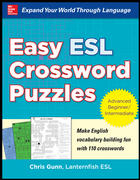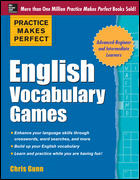![]()
Home | Crosswords | Word Searches | Flash Cards | Verbs | Songs | Creative Writing | Work Sheets | Phonics | ABCs
Potion Book | Spell Book | ESL for Adults | ESL Articles| Lesson Plans | Young Learners | Jobs |

Teaching Precision Through Riddles and Problem Solving
by Yoda Schmidt
When teaching ESL/EFL to the brightest middle and high school students, I often encounter the problem that they have nothing to talk about because they lack experience in anything. And so lately, I've been developing materials that are challenging, interesting, and get them speaking. Last month, I looked at getting students to be effective communicators using graded reading materials. This month, I am going to look at teaching students to be precise.
The activities for this technique are various but they are all centered on providing solutions to riddles. Why riddles? For one, riddles are intrinsically motivating. Students enjoy putting their problem solving capabilities to the task. More importantly, the solutions to many of riddles involve the language of logic and require precision.
Riddles Available for Download
(worksheet only)
(worksheet only)
(worksheet only)
(worksheet only)
Other Fun Riddles Resources
The method used to introduce the riddle will vary depending on the riddle. In the upper right corner, several riddles are provided in different formats. With many of the riddles, one student can take five minutes to read the riddle. Once, the student understands what the riddle is asking, the student can pose the riddle to their group.
As a group, they will come up with a solution. This part is pretty much a free talking activity. The teacher will have to provide numerous hints, as most students will not be able to solve the riddles on their own. This is OK because the students will enjoy the solutions and getting the answer is not so much the focus as developing the skills to speak logically and precisely.
After the students have come up with a solution (maybe more than one -- It's good to let them explore different answers and debate whether they are in fact valid solutions, even if the solutions are not the canonical solutions). The teacher should have the students individually retell the solution (as a great fluency exercise). Here, teacher feedback is essential. This activity is better suited to a small group than a large class. The teacher will interrupt the student and show them how to be precise in describing their solutions. Students will retell their solution over and over again until they get it perfect.
If a student is too sloppy, the teacher should play the fool and force the student to revise their definitions and descriptions. And then the teacher should tell the student to start again from the beginning. Every student should take a turn explaining a solution to the teacher. The riddles should naturally draw out a lot of logical and repetitive language.
Two Sample Riddles and Canonical Solutions
To explain the concept of precision in detail, it is necessary to provide a few samples of riddles and their solutions. The first riddle that will be discussed is the 'Switches and Light Bulbs' riddle. The second riddle that will be discussed is one of the many 'River Crossing' riddles.
First Riddle: Light Bulbs and Switches Riddle:
You are in a room and there are three light switches that are turned off. The light switches are connected to three light bulbs that are in a different room. You do not know which switch is connected to which light bulb. You cannot see into that room. But you are allowed to go into that room exactly once. How can you figure out which switch is connected to which light bulb?
The Canonical Solution to the First Riddle:
Turn the first switch on and wait for twenty minutes. Then, turn the first switch off and turn the second switch on. Quickly go into the room where the light bulbs are. The light that is on is the second switch. Touch the remaining two light bulbs. The light that is off and warm is the first switch and the light that is off and cool is the third switch.
Second Riddle: Crossing the River:
A family consisting of a mother, a father, and two children was walking in the woods one day. They came to a river and wanted to cross the river so they looked for a way to cross the river. At last, they found a small boat. But the boat was too small to carry the whole family. It could only carry one adult or two children. How can the whole family the far bank of the river?
The Canonical Solution to the Second Riddle:
First, the two children get in the boat and go across the river. One child gets out and the other child goes back across the river. The child in the boat gets out and the mother gets in the boat and goes across the river. When the mother reaches the other side, she gets out of the boat. The child who is across the river gets back in the boat and goes back across the river. The child who is waiting on the near bank of the river gets in the boat and they both go across together. Again, one child gets out and the other goes back across the river. After the child in the boat gets out, the father gets in the boat and goes across the river. When the father reaches the far bank, he gets out and the child who is waiting on the far bank get in the boat. That child goes back across the river and picks up the other child and they go to the far bank together.
Precision:
Middle and high school students tend to economize when they answer. That is, they try to give the bare minimum that is necessary to answer a question or convey what they want to say. The problem with this is that sometimes a little more information will help the listener organize what they are hearing more effectively. More information makes for easier listening.
In the River Crossing riddle, a student could start it off by saying:
Two children get in the boat and go across the river. One child gets out. One child goes across the river.
This does convey all of the essential information but it would be easier for the listener if the speaker differentiated between the two children somehow. This can be done in more than one way:
Two children get in the boat and go across the river. One child gets out and the other child goes across the river.
Two children get in the boat and go across the river. One child gets out. And the child who is still in the boat goes across the river.
Here, 'the other' and 'still in the boat' help to define which child is being spoken about.
And instead of just 'going across' the river, as is used twice in the sample answer, the student could say 'going across' to represent going to the far bank and 'going back across' to represent going to the near bank of the river. Again there is more than one way to add precision to 'going across.' These additions may seem minor but they help the listener to follow what is being said.
Even 'two children' should really be 'the two children' because the student is talking about the two children that were already introduced at the beginning of the riddle.
The teacher can get the students to be more precise by playing the fool and interrupting the student by asking a lot of 'which' questions: "Wait a minute. Which child goes across the river?", "Which way are they going across?", "What children are you talking about?"
These kinds of questions prompt the student to define what they are talking about more clearly. And when they do come up with a more precise wording, it is useful to make them start the story again until they get a complete solution that is clear as day, without any possibility for confusion. This precision is important because you just never know what your listener will get hung up on.
Precision is largely the work of relative clauses, determiners, and other adjectives. In the 'Switches and Light bulbs' riddle, it is important to differentiate the light bulbs when a solution is given. That is done in a precise manner by introducing the relative clause 'that'.
The light that is on is the second switch.
The light that is off and warm is the first switch.
And the light that is off and cool is the third switch.
There are a large number of determiners that add precision. These include definite articles; indefinite articles; quantifiers like some, both, few, and all; numerals like two and the fourth; possessive adjectives like my, your, her, and demonstrative pronouns like this, that, these, those.
Recommended Site: Wu's Riddles
Absolutely the best site for riddles I have ever encountered -- especially the discussion forums. It is sometimes heavily mathematical, but there is stuff for the non-math majors as well.There is a healthy community of riddle solvers and for the most part it is populated by people who are interested in the process of riddle solving, not just the answers.

